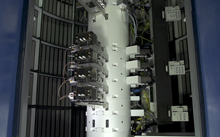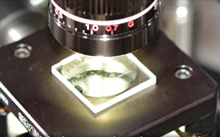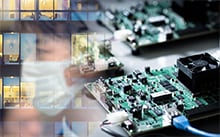A significant challenge in the field of logistics has been developing efficient warehousing systems, the requirements for which have grown increasingly complex due to diversifying consumer demand, the rapid growth of e-commerce, and other factors. Existing automated systems utilized in warehouses have a limited scope of handling and are only suitable for certain items, making it difficult to expand their application to a wider range of warehouses. To come up with a more universal approach, Hitachi has been developing a new automation system, the autonomous mobile dual-arm robot. This robot is capable of picking items from shelves in warehouses where many different types of products are kept.
Logistics has become an essential lifeline supporting businesses and the daily lives of consumers. Warehouses are playing an important role in logistics networks. Especially in recent years with the rapid growth in Internet shopping and growing diversification in consumer demand, warehousing operations have been challenged due to constant change in the number and kinds of items that warehouses handle. Given this situation, determining how to operate warehouses efficiently has become a serious issue. Logistics support robots are now seen as a promising solution.
Hitachi has been working on robotic technologies since the introduction of the first industrial robots in the 1960s. The company has developed various robots, from arc welding and other manufacturing support robots to robots that can work in specialized environments, including robotic arms used in space exploration.
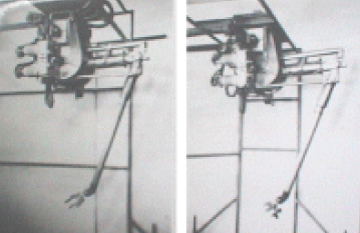
Servo-Manipulator (remote controlled device) with dual arm structure developed in 1963
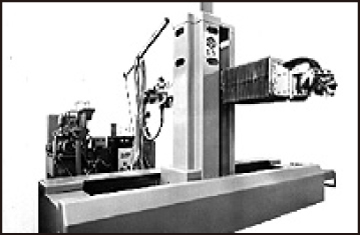
Japan's first arc welding robot manufactured in 1975
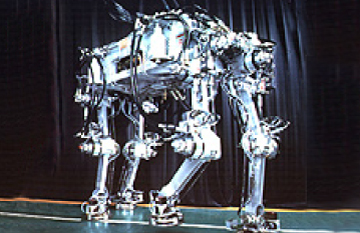
Four-legged walking robot developed in 1990
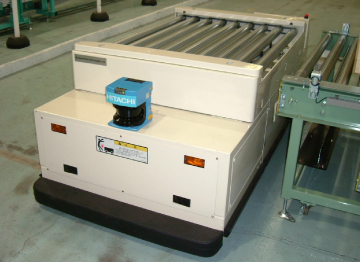
Autonomous automatic guided vehicle that can move without markings on the floor was commercialized in 2009
Around 2003, Hitachi started working intensively on the utilization of artificial intelligence in support robots. The company made particular progress on research in autonomous movement and its application in logistics and distribution systems. The aim is to revolutionize logistics to be more efficient and to be able to respond flexibly to changes.
In 2009, Hitachi commercialized the Autonomous automatic guided vehicle which can move without reading markers (such as white lines) by creating its own maps. In addition, the company developed autonomous movement technology so that automatic guided vehicles can move in warehouses where its environment changes dynamically in 2015.
In general, automatic guided vehicles in factories and warehouses have been contributing to the efficiency of logistics, but in distribution centers, people are still needed to retrieve products from shelves and sort products for shipping before and after automatic guided vehicles have transported products. In warehouses where only a few types of products are stocked, efficiency can be increased by installing fixed systems such as automatic sorters and stackers. However, this kind of conventional equipment is unable to process many different kinds of products, and substantial improvements in efficiency would not be possible in distribution warehouses where the items stocked are constantly changing.
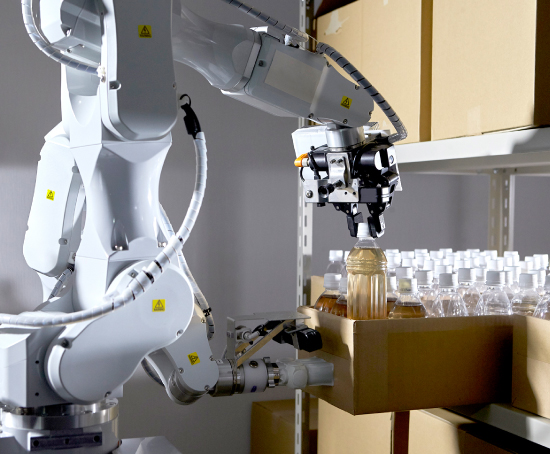
Autonomous mobile dual-arm robot developed in 2015. A mobile platform, a height adjustable lift and two arms perform various coordinated tasks
Responding to this challenge, Hitachi began conducting research on logistics support robots that can work quickly, at speeds roughly comparable to human beings, to pick up various kinds of products from shelves in distribution warehouses. The efforts resulted in the development of the autonomous mobile dual-arm robot in 2015. This dual-arm robot has a mobile platform with a height-adjustable lift mounted on it and uses two commercially available industrial arms with specialized grippers that act as hands for picking up and securely holding items. The robot has sensors to determine its own position and the position of products. It can move, find, and pick up products it has been looking for. It can also perform coordinated operations using both arms simultaneously to accomplish tasks such as pulling out a case from a shelf and picking a plastic bottle out of the case. It can even pick out a product and place it in a box being held by the other arm, or pick up a box using two arms to support it from the side and below.
The key to the success of the autonomous mobile dual-arm robot is Hitachi's newly developed coordination control technology. For a robot to deal with various products and storage environments quickly and flexibly, it needs to coordinate the movements of various mechanisms, including its mobile platform, lift and two arms. When using conventional coordination methods, frequent communication is required between the different mechanisms, increasing both the communication traffic and the required calculations. Uniformly controlling all the mechanisms also requires complicated programming. Together, these increase processing volume and raise the risk of malfunctions in the robot. The new technology that Hitachi has developed utilizes a control system that efficiently coordinates activity between the mobile platform, lift and two arms. By predetermining the appropriate timing for the movement of each mechanism and the minimum information needed to be sent to each mechanism, it becomes possible to have all the mechanisms work together while also reducing communication traffic. This has helped the robots to move quickly and flexibly like human beings.
The growing popularity of Internet shopping around the world has been creating rapid changes in the field of logistics. In this environment, Hitachi has been working on innovations in software and hardware for logistics, including a thorough review of the capabilities of grippers so that logistics support robots can handle products of different shapes and weights. Hitachi Group companies are planning to start using the technology in the next few years with the aim of commercializing it shortly thereafter. If autonomous mobile dual-arm robots and automatic guided vehicles can work together, the dream of the unmanned distribution warehouse will soon become a reality. Such advanced robotics will revolutionize warehousing, creating exciting changes in the logistics sector. Through research and development of logistics support robots, Hitachi is creating innovations in logistics that support businesses and the daily lives of consumers.
In addition to research and development for logistics support robots, Hitachi is also making progress in developing an advanced logistics cockpit system to oversee the entire logistics environment. The logistics cockpit system would create an image of the inside of the warehouse using multiple 360-degree cameras to map the warehouse space on a monitor screen. This will allow people to intuitively understand the entire warehouse space.
The prototype that Hitachi has been developing has a user interface to monitor changes throughout a large warehouse facility over time. This overall visualization of operations makes it easier to identify problems, which will lead to more efficient and flexible logistics systems. With these efforts, Hitachi is accelerating research and development from various perspectives to create the warehouse of the future.
Release Date: March 2016
Solutions By: Hitachi, Ltd. Research & Development Group


